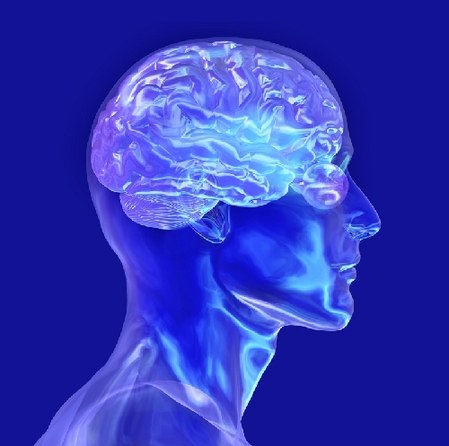(单词翻译:单击)
Date:
日期:
Source:
来源:
Center for BrainHealth
大脑健康中心
Summary:
概述:

New research illustrates how fear arises in the brain when individuals are exposed to threatening images. This novel study is the first to separate emotion from threat by controlling for the dimension of arousal.
新研究阐述了大脑在人们看到威胁影像时如何产生恐惧情绪。这个新奇的研究首次通过控制唤醒的维度将威胁与情感分割开来。
An estimated 8% of Americans will suffer from post traumatic stress disorder (PTSD) at some point during their lifetime. Brought on by an overwhelming or stressful event or events, PTSD is the result of altered chemistry and physiology of the brain. Understanding how threat is processed in a normal brain versus one altered by PTSD is essential to developing effective interventions.
据估计约8%的的美国人在他们的某个时段会遭受创伤后应激障碍(PTSD)的折磨。由强悍而令人难以应对的或紧张的一个或多个事件所引发,PTSD是大脑化学上和生理上改变的结果。理解恐惧在一个正常的脑部活动中被PTSD改变对采取有效的干预是至关重要的。
New research from the Center for BrainHealth at The University of Texas at Dallas published online today in Brain and Cognition illustrates how fear arises in the brain when individuals are exposed to threatening images. This novel study is the first to separate emotion from threat by controlling for the dimension of arousal, the emotional reaction provoked, whether positive or negative, in response to stimuli. Building on previous animal and human research, the study identifies an electrophysiological marker for threat in the brain.
达拉斯德州大学的大脑健康中心今天在大脑和认知论坛上发布了新研究,阐明了当人们看到威胁影像时,如何产生恐惧情绪。这个新奇的研究首次通过控制唤醒的维度将威胁与情感分割开来,无论是积极的还是消极的,情绪反应都是响应于刺激。基于之前对动物和人类的研究,该研究确定了一个反映大脑中威胁的电生理指标。
"We are trying to find where thought exists in the mind," explained John Hart, Jr., M.D., Medical Science Director at the Center for BrainHealth. "We know that groups of neurons firing on and off create a frequency and pattern that tell other areas of the brain what to do. By identifying these rhythms, we can correlate them with a cognitive unit such as fear."
“我们试图发现想法存在于大脑中的位置,”大脑健康中心的医学科学主任、医学博士John Hart, Jr解释道。“我们知道组神经元放电和停电时,会创建一个频率和模式,告诉大脑的其他区域该做什么。通过识别这些节律,我们能把它们与恐惧等认知单元相联系。”
Utilizing electroencephalography (EEG), Dr. Hart's research team identified theta and beta wave activity that signifies the brain's reaction to visually threatening images.
利用脑电图(EEG),哈特博士的研究小组发现了表示大脑对视觉威胁影响反应的θ和β波活动。
"We have known for a long time that the brain prioritizes threatening information over other cognitive processes," explained Bambi DeLaRosa, study lead author. "These findings show us how this happens. Theta wave activity starts in the back of the brain, in it's fear center -- the amygdala -- and then interacts with brain's memory center -- the hippocampus -- before traveling to the frontal lobe where thought processing areas are engaged. At the same time, beta wave activity indicates that the motor cortex is revving up in case the feet need to move to avoid the perceived threat."
“我们很早就知道大脑对威胁信息的敏感度要高于其他认知过程,”该研究的首席作者Bambi DeLaRosa解释道。“这些发现向我们展示了它是如果发生的。θ波活动开始于位于大脑后部的恐惧中心——杏仁核——然后在前往思维加工区域,大脑额叶之前,与大脑记忆中心——海马体——相互作用。同时,β波活动表明,在需要移动位置以避免威胁时,运动皮层加速加速运转。”
For the study, 26 adults (19 female, 7 male), ages 19-30 were shown 224 randomized images that were either unidentifiably scrambled or real pictures. Real pictures were separated into two categories: threatening (weapons, combat, nature or animals) and non-threatening (pleasant situations, food, nature or animals).
在这项研究中,给予年龄在19岁到30岁之间的26个成年人(19个女性,7个男性) 224随机影像,要么是无法辨认的乱码,要么是真实的图片。真实的图片被分为两类:具有威胁性的(武器、战斗、自然或动物)和的不具有威胁性的(愉快的场景、食品、自然或动物)。
While wearing an EEG cap, participants were asked to push a button with their right index finger for real items and another button with their right middle finger for nonreal/scrambled items. Shorter response times were recorded for scrambled images than the real images. There was no difference in reaction time for threatening versus non-threatening images.
在戴着脑电图帽的同时,参与者被要求用右手食指按下按钮以看到真实图片,另用右手中指按另一个按钮以看到不真实的图片或乱码。乱码图像比真正的图像记录的响应时间更短。威胁性图片和不具威胁性的图片在反应时间上没有差别。
EEG results revealed that threatening images evoked an early increase in theta activity in the occipital lobe (the area in the brain where visual information is processed), followed by a later increase in theta power in the frontal lobe (where higher mental functions such as thinking, decision-making, and planning occur). A left lateralized desynchronization of the beta band, the wave pattern associated with motor behavior (like the impulse to run), also consistently appeared in the threatening condition.
脑电图结果表明威胁图片诱发枕叶(大脑中处理视觉信息的区域)中的θ波活动早期增加,紧随其后的是枕叶区域(更高级的心理机能,如思考、决策和计划,在这里发生)θ波的增加。β波左单侧性的去同步化,与运动行为(如脉冲运行)相关的波动行为,也一再出现在威胁情况下。
This study will serve as a foundation for future work that will explore normal versus abnormal fear associated with an object in other atypical populations including individuals with PTSD.
本研究将成为未来研究工作的基础,将在其他非典型人群中,包括在患有创伤后应激障碍的人群中,探索与一个对象相联系的正常和不正常的恐惧。
This work was supported by the Berman Laboratory of Learning and Memory at The University of Texas at Dallas and the Jane and Bud Smith Distinguished Chair.
这项工作是达拉斯德州大学的学习和记忆伯曼实验室、Jane和Bud Smith特聘教授提供支持。


